Galilee, Saskatchewan
Somewhere in southern Saskatchewan there is a buried treasure worth as much as $500,000. If we find it, we will split the proceeds.
I encountered the story of a lost fortune in my late father’s notes. Dad collected historical records and photographs from the late 19th and early 20th centuries in southern Saskatchewan. Among his unfinished research is a tale about a strongbox of silver, gold and US currency brought to Saskatchewan by Sitting Bull after the Battle of the Little Big Horn, in 1876.
To find the treasure we will need a combination of historical data, clues from Dad’s research, and an abundance of good luck.
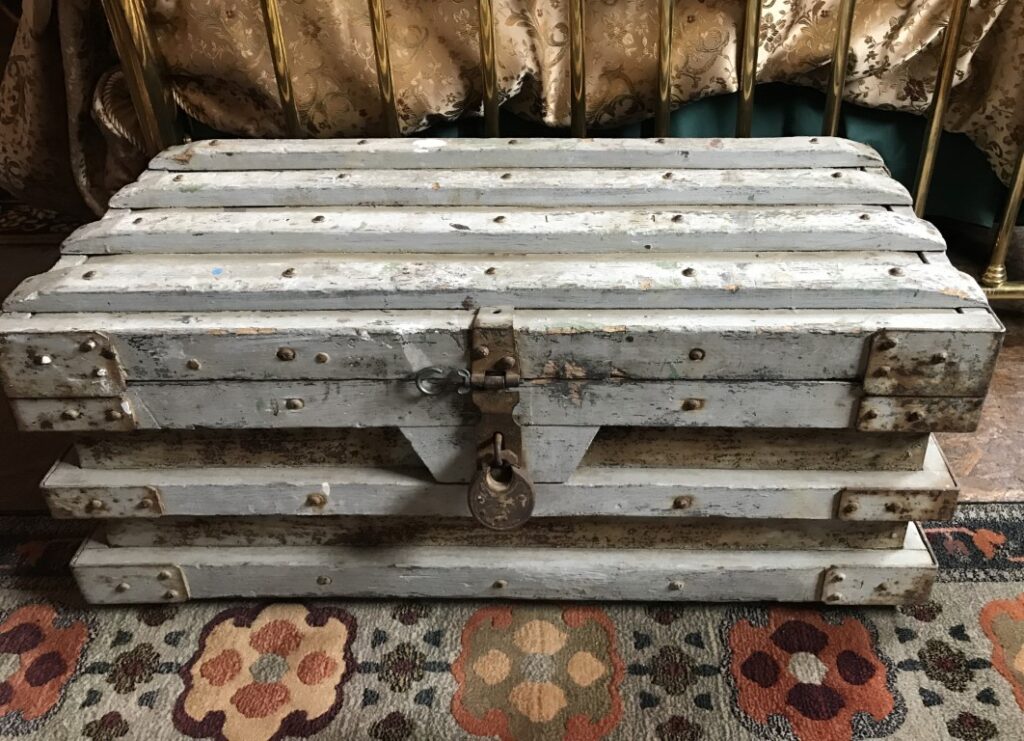
Sitting Bull was chief of the Lakota-Sioux people in what is now South Dakota and Montana during the Great Sioux Wars of the late 19th century. In 1876, Sitting Bull and his warriors defeated the American army, at The Battle of the Little Big Horn.
At the time of the battle, Custer’s 7th Cavalry was carrying an army payroll, consisting of silver, gold and banknotes, which fell into the hands of Sitting Bull.
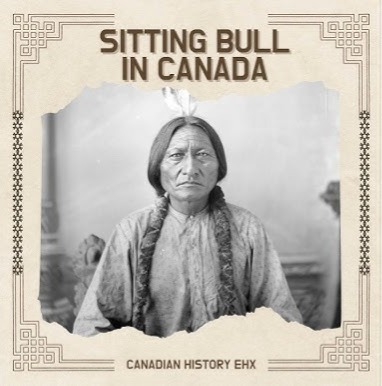
After the battle, Sitting Bull and his entourage of 5000 warriors and Lakota people moved north to Canada to escape the avenging American army. They took the army payroll strongbox with them.
The band travelled north through the Black Hills, crossed the Missouri River and entered Canada near Wood Mountain. The band was welcomed by Canadian authorities and resettled near Old Wives Lake.
Sitting Bull and his people stayed in Canada for four years. When they went back to the US in 1881 to face trial, the treasure didn’t go with them.
The gold and silver treasure wasn’t traded, and it was never returned to the US Cavalry.
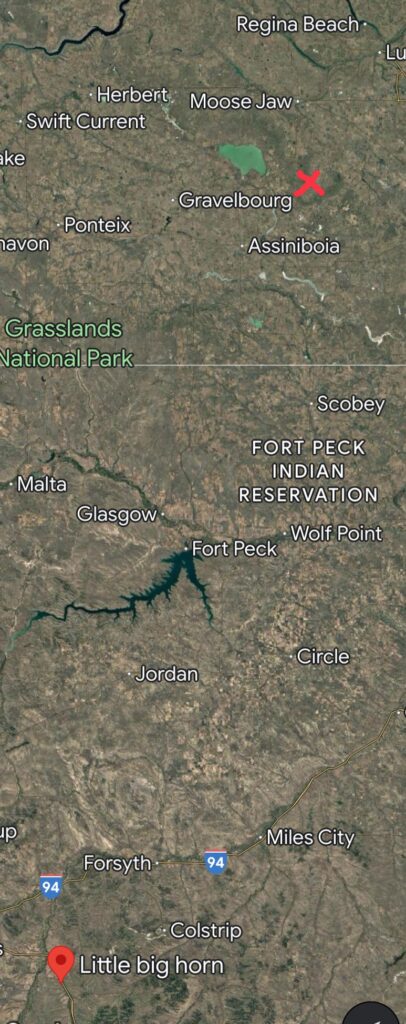
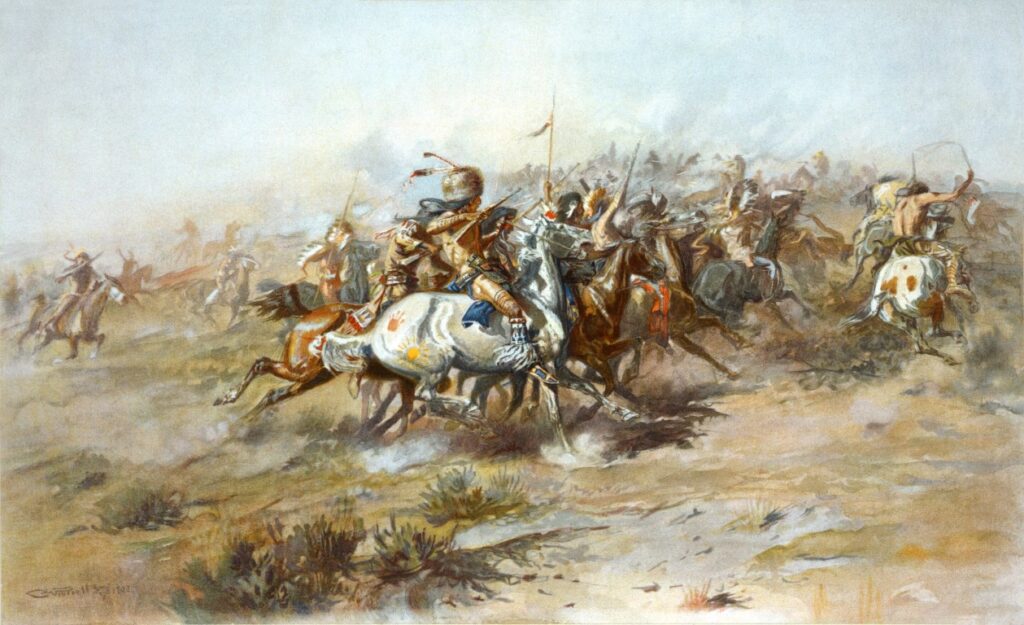
Battle of the Little Bighorn – Charles Marion Russell
The Wood Mountain area has very little wood and no mountains.
It is so named because there was once an isolated bluff of poplar trees on the otherwise desolate prairie. Métis people living there cut and piled the poplar for building material and firewood. The Métis named the location Montaigne de Bois, mountain of wood.

Poplar pole building at Wood Mountain Métis settlement in 1874. The building would have been standing when Sitting Bull Passed through.
Dad heard the story of Sitting Bull’s treasure from a man named Fred Gomersall, a pioneer rancher from the Wood Mountain area. During an interview with Dad, Fred relayed his story about the lost treasure.
“There was once a circle of boulders, about 100’ across, south of Galilee. The boulders must have been hauled from some distance, as there were no others like them in the immediate vicinity.”
Fred had seen the boulder circle as a young man. He and others assumed it was a teepee ring or some other Native American edifice.
There were once many stone circles in the area, placed there by ancient tribespeople, but Fred remembered that this one was unique in that the stones were not of local origin.
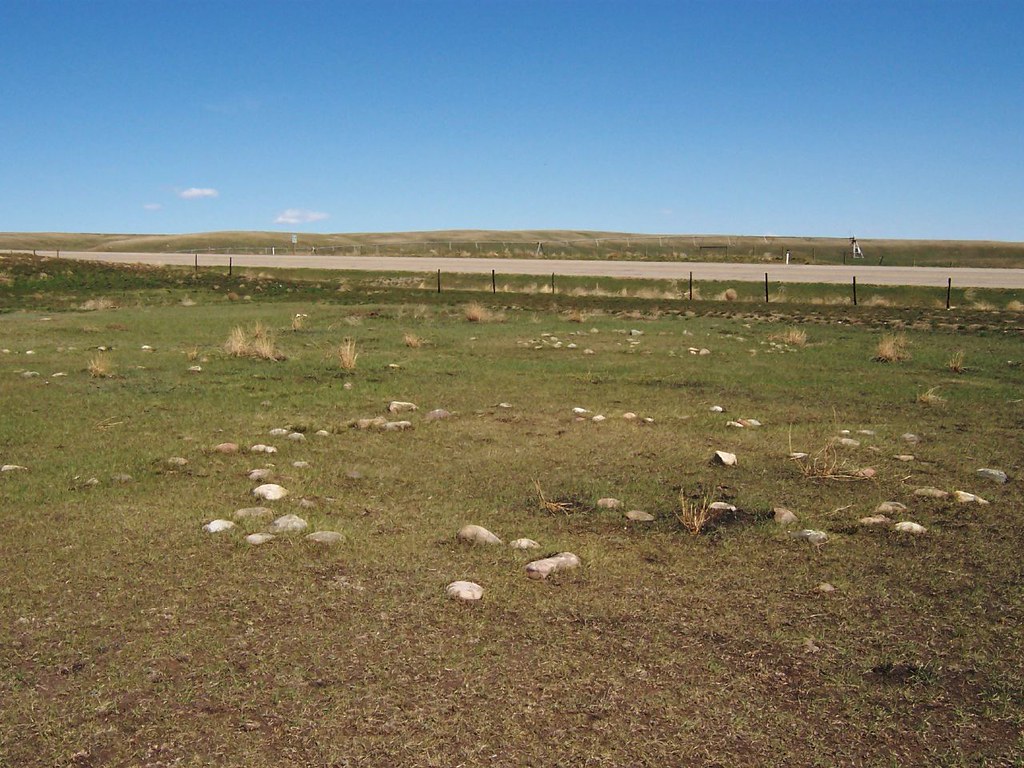
The circle of boulders, and many other Native American artefacts, disappeared in the 1950s and 1960s to make way for farming enterprises. The exact location of the boulder circle Fred had seen faded to oblivion.
When the story of Sitting Bull’s treasure emerged, Fred speculated that perhaps the unique boulders were placed by Indians to mark the location where the treasure was buried.
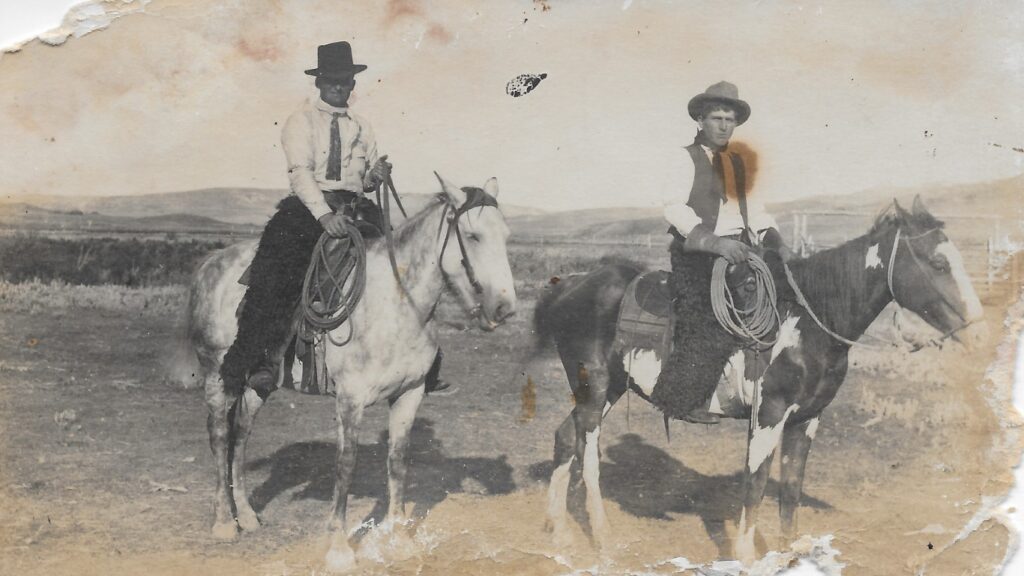
Fred Gomersall and an unknown cowboy near Galilee in the Wood Mountain district – date uncertain.
When Dad interviewed him in the 1980s, Fred was an elderly man. He remained convinced that the circle of stones was a marker of significance. Fred relayed everything he could remember about the location of the boulder circle to Dad.
“There was a trail from the water tank east of Galilee that went south across the hills. The circle of rocks was on that trail.”
Over the years, Fred and others searched the area where they roughly remembered the stone circle being. They found a few arrowheads, but no treasure.
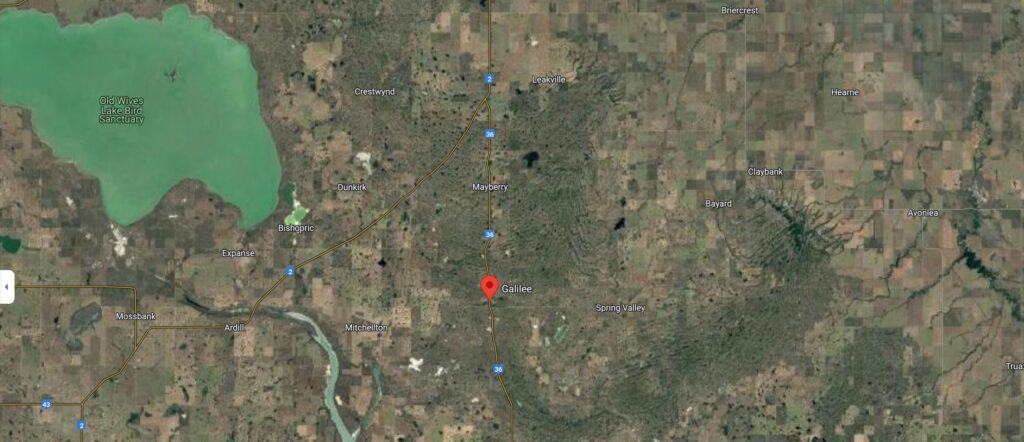
The Saskatchewan town of Galilee was likely named after the Sea of Galilee, where Jesus is said to have walked on water.

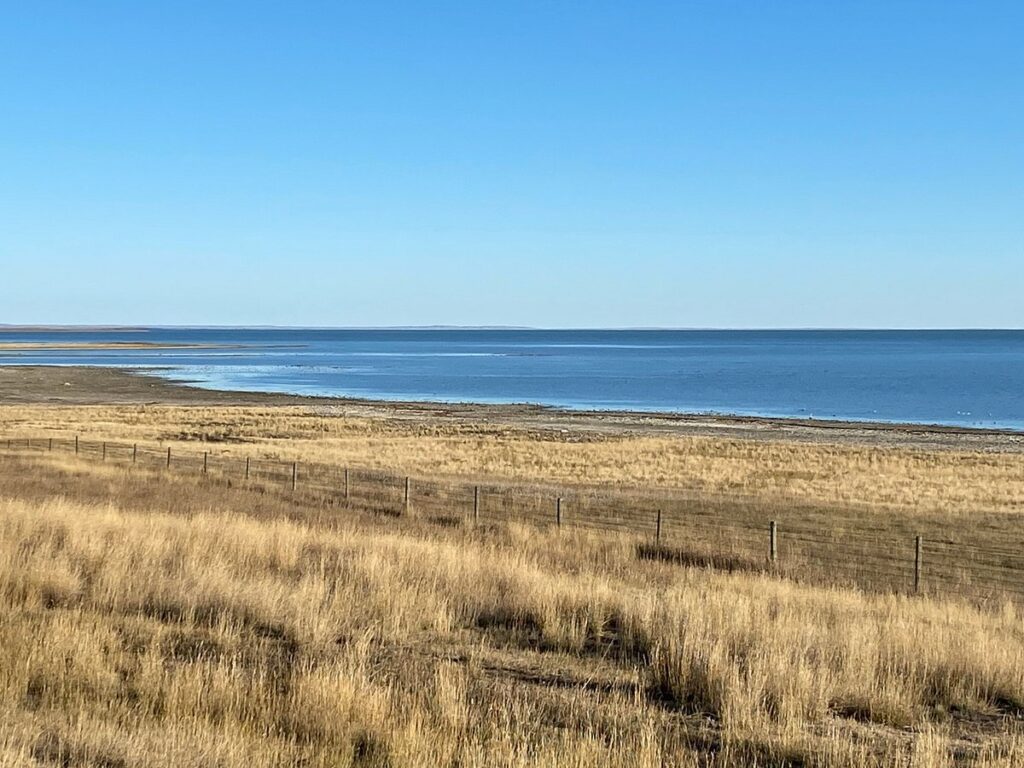
The Sea of Galilee in Israel (left) and Old Wives Lake in Saskatchewan (right) bear remarkable similarities.
There is a whole lot of Saskatchewan out there. Even though Fred narrowed it down some, the location of the boulder circle and the potential treasure could be anywhere in a fifty-mile radius of the now extinct town of Galilee.
But what do you say, should we give it a try? The chances of us finding Sitting Bull’s treasure are remote but the rewards could be great.
Let’s do some digging. It will be fun to try, even if our odds are about the same as our chances of …
… Walking on Water.
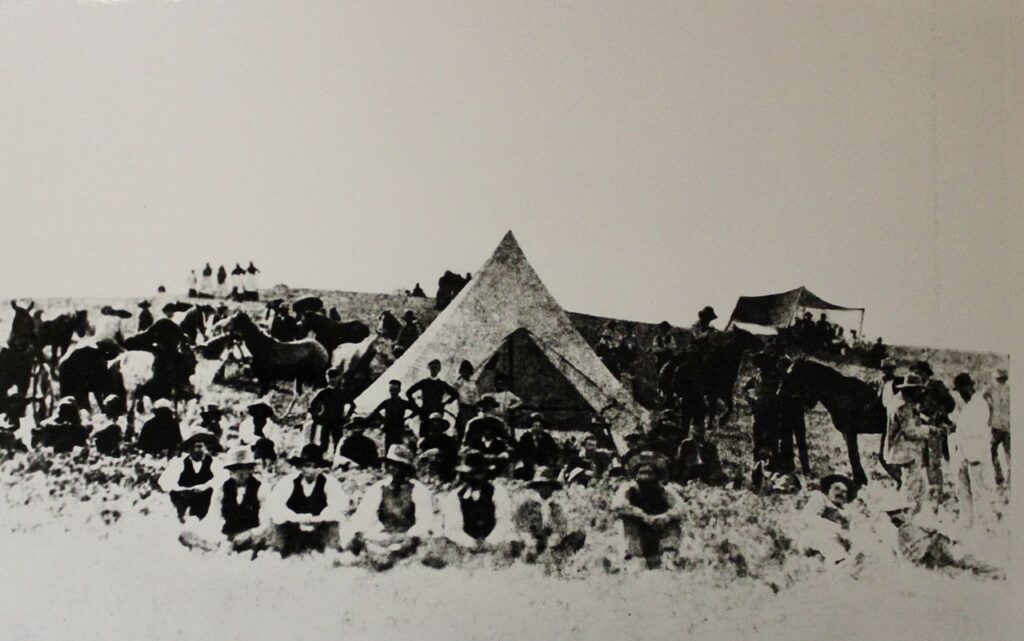
Conference among Sitting Bull and his People, and Jean Louis Legaré (Indian Agent), near Wood Mountain in 1881, just before he retuned to the US.
Like and Subscribe…
To join the WellWaterBlog audience, scroll down and add your e-mail address to the growing list. You will receive a notice each time a new article is posted and nothing else – No Advertising, No Solicitations, No B.S., Just Fun.


Judy Darvill
I’m always up for a tromp through a field. Let me know when you are setting out on your search and I’ll meet you there!
Russ Paton
Perfect! Bring your pick axe, the ground is still frozen. 🥶